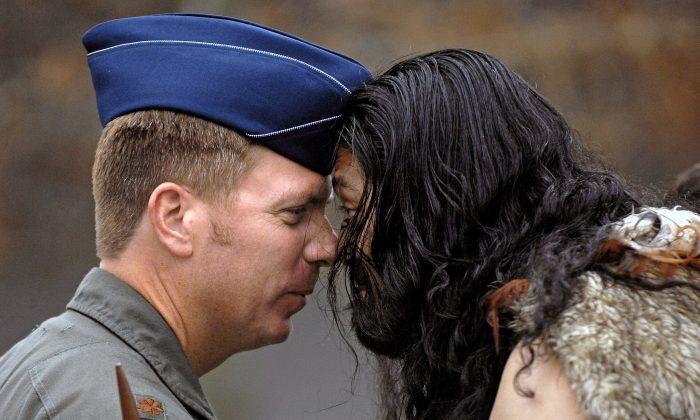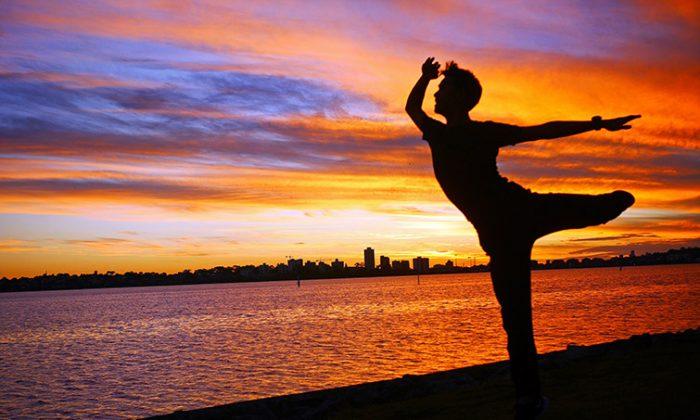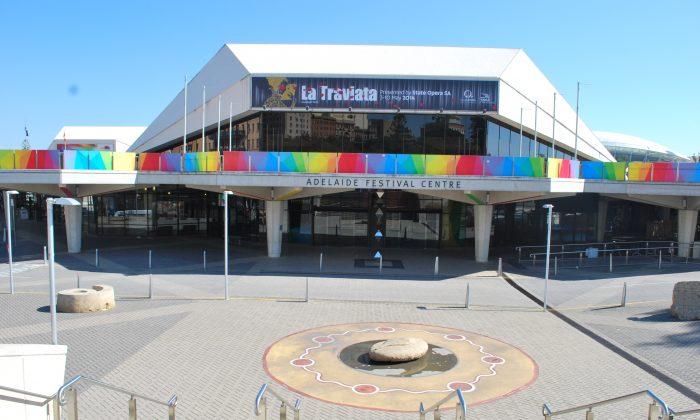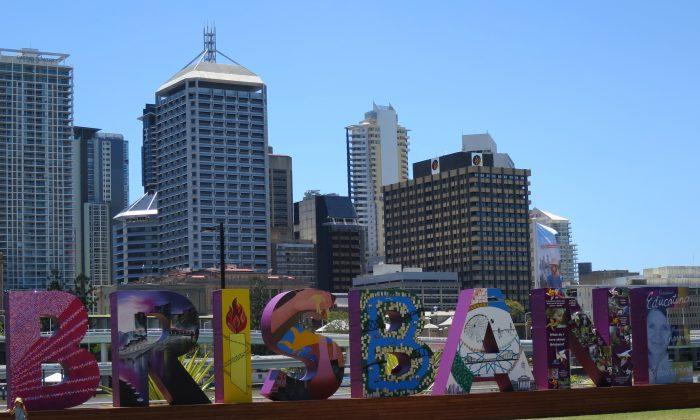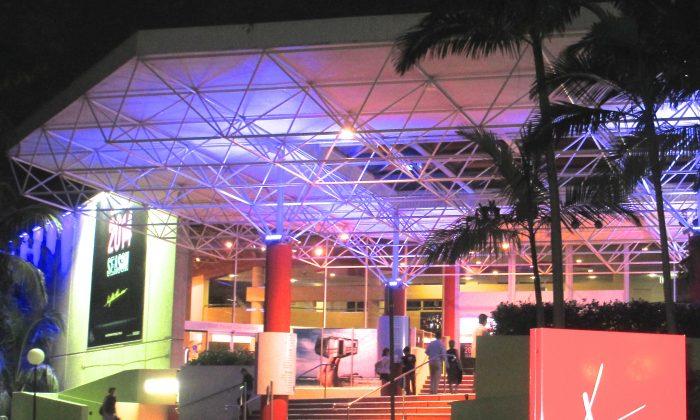The salutation is known as the “hongi,“ typically thought of by non-Maori as simply the rubbing or pressing of noses, an intermingling, and exchange of breath, the “ha.”
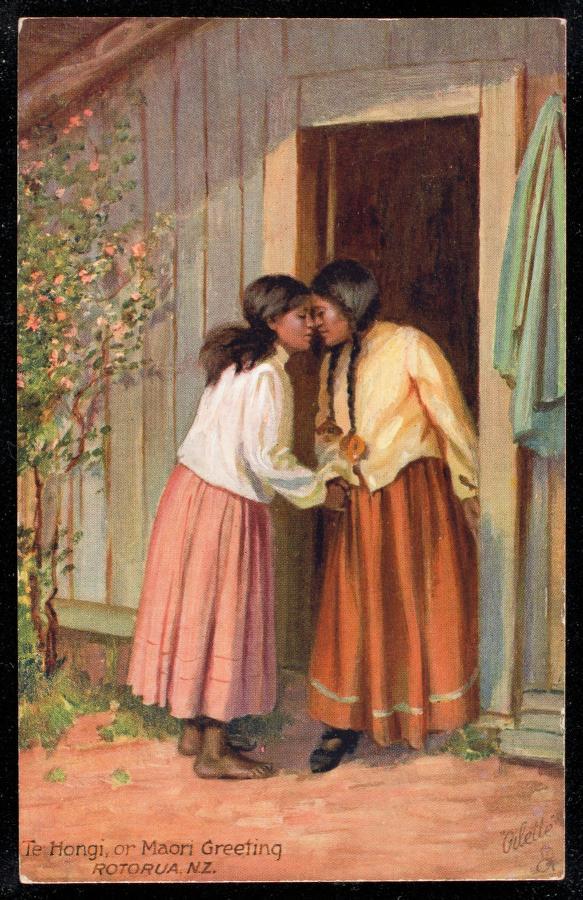
But for me, a daughter of the Te Arawa tribe that settled in the thermal regions of the North Island, this description of the hongi is a denigration of an ancient and sacred tradition.
I recall as a young child strolling down the street clutching the hand of my grandfather, when we chanced upon an old friend he hadn’t seen in a while.
Eyes smiling in recognition, the two men drew close, arms extended as if to shake hands. The gesture only drew them closer. And then, forehead to forehead, nose touching nose, with a hand on each other’s shoulder, they embraced, not a word exchanged. Yet within the silence, a volume of words was spoken.
The longer the two men held the position, the higher the esteem that was shown. Then as their feelings deepened, tears of regret and sorrow would flow as they remembered unshared moments stolen by time that had slipped by them.
The head is regarded by Maori as “tapu,” the most sacred part of the body, and as the process deepens, those who have since departed this world are remembered and grieved.
Their foreheads touching, the two become as one bonded by their ancestral ties, and they enter a still deeper level. The connection to their ancestors reminds them of who they are, where they come from, and whence they will return. In making this connection, they honor each other, thereby honoring themselves.
Embodied in the sacredness of the hongi are their primal parents: Ranginui, the sky father, and Papatuanuku, the earth mother, back to the supreme god known to Maori as Io Matua. But that is natural to the Maori bearing, needing no mention.
In bygone days, the name Io Matua was considered too sacred to be spoken. But today, we pay homage in songs and chants and recite genealogy for future generations.
However, it was not until each level of the hongi was felt and acknowledged that the hongi was considered finished and the two could talk freely.
The image of this meeting between the two men, the “aroha” (love) and respect that flowed, will forever be etched in my mind, and up to this day, never have I seen nor witnessed anything so powerful and dignified.
Back then, the hongi was known to last from a few seconds up to several minutes, depending on the circumstances.
The Maori stem from a world steeped in spirituality, the word “Maori” itself meaning ordinary, according to H.W. Williams’s “Dictionary of the Maori Language.”
Elders believe the word was derived directly from the gods to make a distinction between being human and being divine.
It is also believed the hongi was god-given. But in today’s world, many perspectives offered by non-Maori tend to undermine its sacred form.
Performed mostly on formal occasions at the “marae”—the ancestral home of the Maori, where the spiritual well-being of the tribespeople is maintained—the hongi signals that formalities are over and guests and hosts are able to freely mingle at their own leisure.
On these occasions, at the “powhiri” welcoming ceremony, the hongi is imparted with a light touch of the nose (maybe once or twice) and a handshake between men and a peck on the cheek between women called the “hariru.” A long line of people file through to be properly welcomed with hongi, after which visitors are free to mingle and no longer regarded as guests.
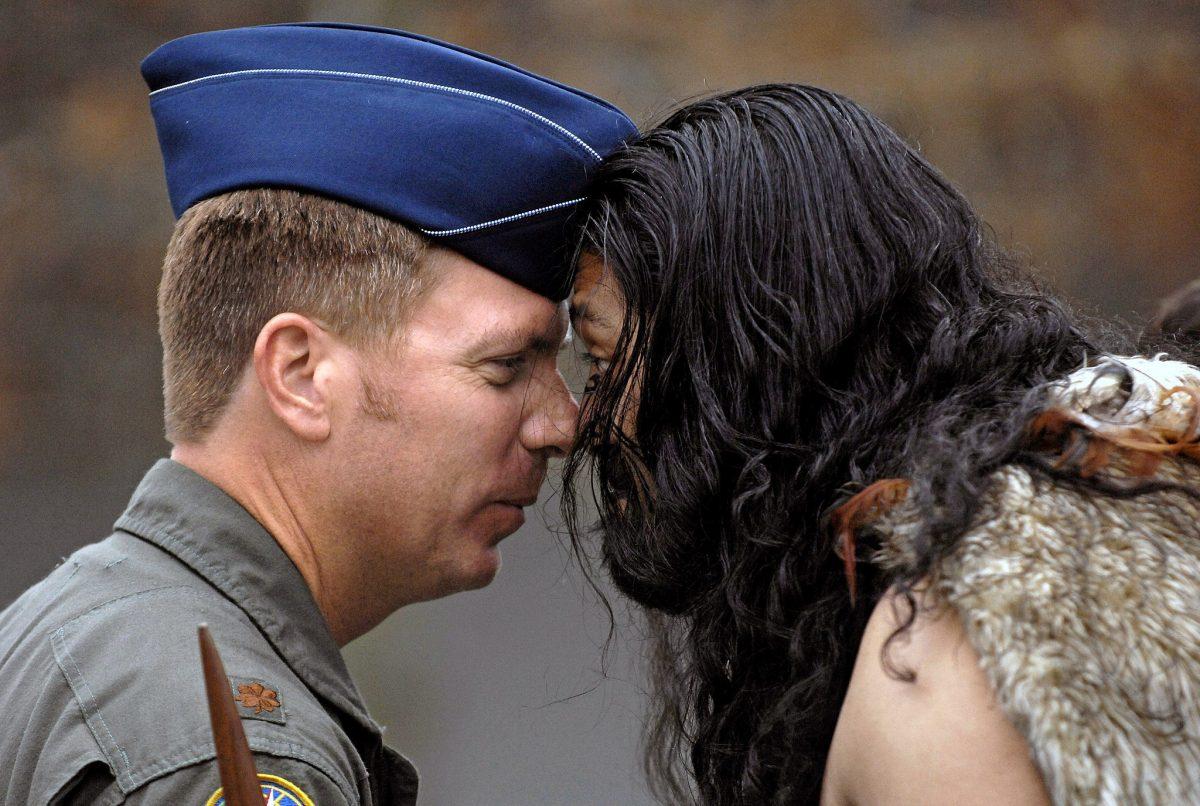
The hariru is usually followed by a “hakari,” a celebratory feast usually cooked in a “hangi,” best described as an earth oven.
However, living outside of the marae environment in a foreign country, nothing gives me more pleasure than seeing this centuries-old tradition carried into the new millennium by Maori people, young and old alike—especially at times when strolling down the street they chance to meet and greet with the traditional Maori hongi, a gift from the gods.
But unfortunately, as the years roll on, few Maori witness the spirit of the hongi the way that I had as a little girl. Though still kept alive by many, the full meaning of hongi is lost, compromised by Westernization, as more regard the greeting about as meaningful as a handshake or a kiss on the cheek.

